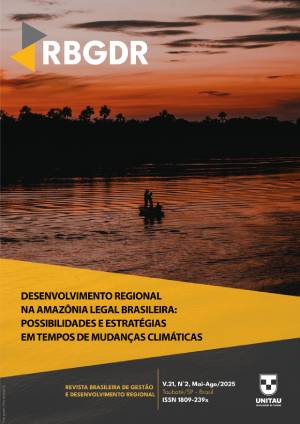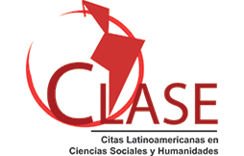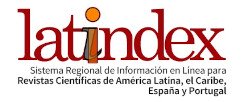FOREST COVER CONVERSION AND EXPANSION OF CATTLE RANCHING IN THE EXTRACTIVE RESERVES OF VALE DO ACRE, BRAZILIAN AMAZON
DOI:
https://doi.org/10.54399/rbgdr.v21i2.7880Resumo
This study evaluates land-cover changes in Vale do Acre, Brazil, with emphasis on forest-to-pasture
conversion in the Chico Mendes and Cazumbá-Iracema Extractive Reserves. This is a quantitative
and exploratory study based on geospatial analysis, integrating multitemporal deforestation data
(PRODES/INPE), livestock and non-timber forest product (NTFP) statistics (IBGE), and atmospheric
methane concentrations (Sentinel-5P/ESA). Data were processed using Geographic Information
Systems (GIS) and Python scripts to detect spatial and temporal trends in environmental
transformations. Results show deforestation peaks in the Chico Mendes Reserve in 2019 (79 km²)
and 2021 (90 km²), mainly in municipalities like Epitaciolândia near highways and urban zones. In
Cazumbá-Iracema, deforestation was highest shortly after its establishment, resurging from 2018
onwards. The analysis indicates that cattle ranching expansion and declining NTFP production—
especially rubber—are weakening traditional livelihoods in extractive communities. Additionally,
pasture expansion correlates with rising atmospheric methane concentrations, particularly in
municipalities where pasture areas have overtaken forest cover. These findings highlight the need
for public policies focused on sustainable land management, strengthened conservation efforts, and
the inclusion of traditional knowledge. The study contributes to the debate on regional development
and socio-environmental challenges in the Amazon, emphasizing the role of extractive reserves in
balancing conservation and livelihoods.
Downloads
Métricas
Downloads
Publicado
Como Citar
Edição
Seção
Licença
Copyright (c) 2025 Revista Brasileira de Gestão e Desenvolvimento Regional

Este trabalho está licenciado sob uma licença Creative Commons Attribution-NonCommercial 4.0 International License.
Os autores que tiverem seus trabalhos aceitos e publicados na Revista Brasileira de Gestão e Desenvolvimento Regional estarão sujeitos a política de direitos autorais CC https://creativecommons.org/licenses/by/4.0/.
Em caso de aceite do artigo para publicação, os direitos autorais são automaticamente cedidos para a Revista Brasileira de Gestão e Desenvolvimento Regional.


















